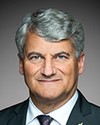Thank you very much, Mr. Chair.
Ms. Schwartz, gentlemen, welcome to your Parliament.
Mr. Ferguson, it is very nice to see you again. Congratulations on the quality of your French and your bilingualism.
I am always very proud to say that I represent an indigenous community, the Huron-Wendat Nation, which is located near Quebec City, on the Wendake Reserve. It is at the heart of my riding. The people on that reserve have been my neighbours since I was born. I know them very well, and they are very close friends.
We all know that there are communities in Canada that live in urban or semi-urban areas, and others that live in less densely populated areas. We also know that it is sometimes urgent to be seen by a dentist—everyone has suffered a toothache—that it is always difficult to find one on Saturdays or Sundays, although it's possible. This happened to me seven years ago. That said, in your report, you mention 300,000 First Nations and Inuit, and 237 communities.
For the moment, my question is for the officials from Indigenous and Northern Affairs Canada.
Is there a noticeable difference between access to dental care for First Nations and Inuit in urban areas and that for First Nations and Inuit in non-urban areas?

